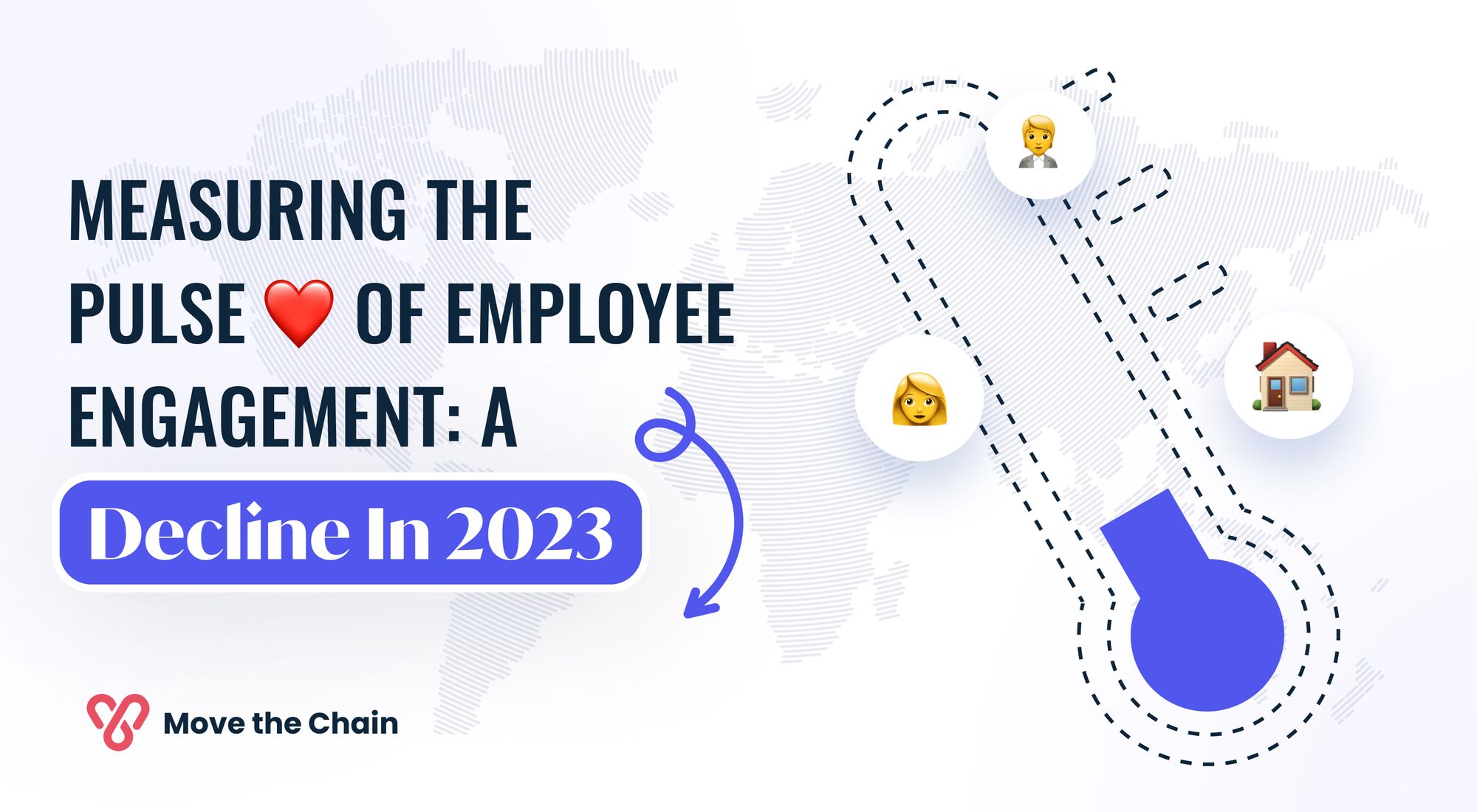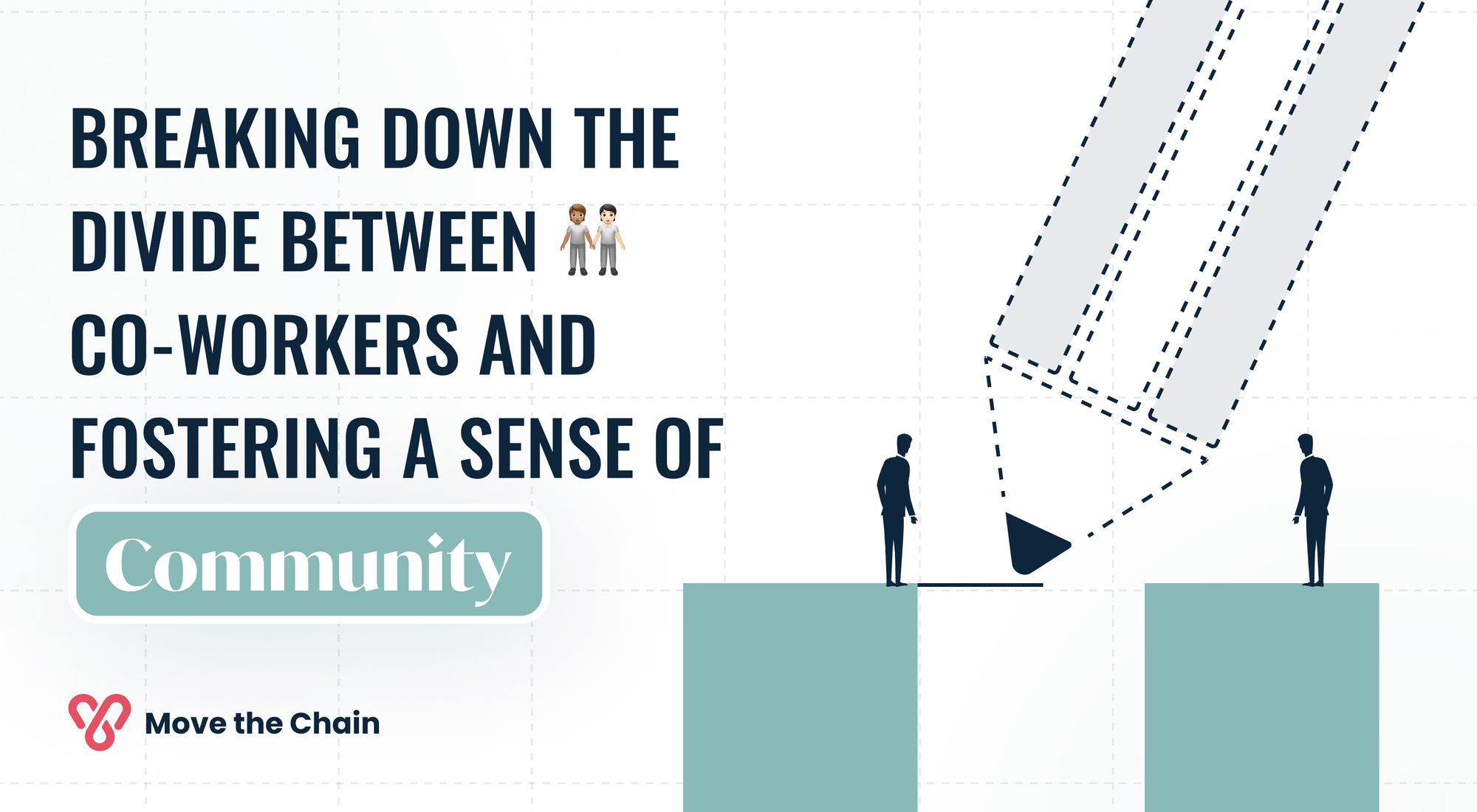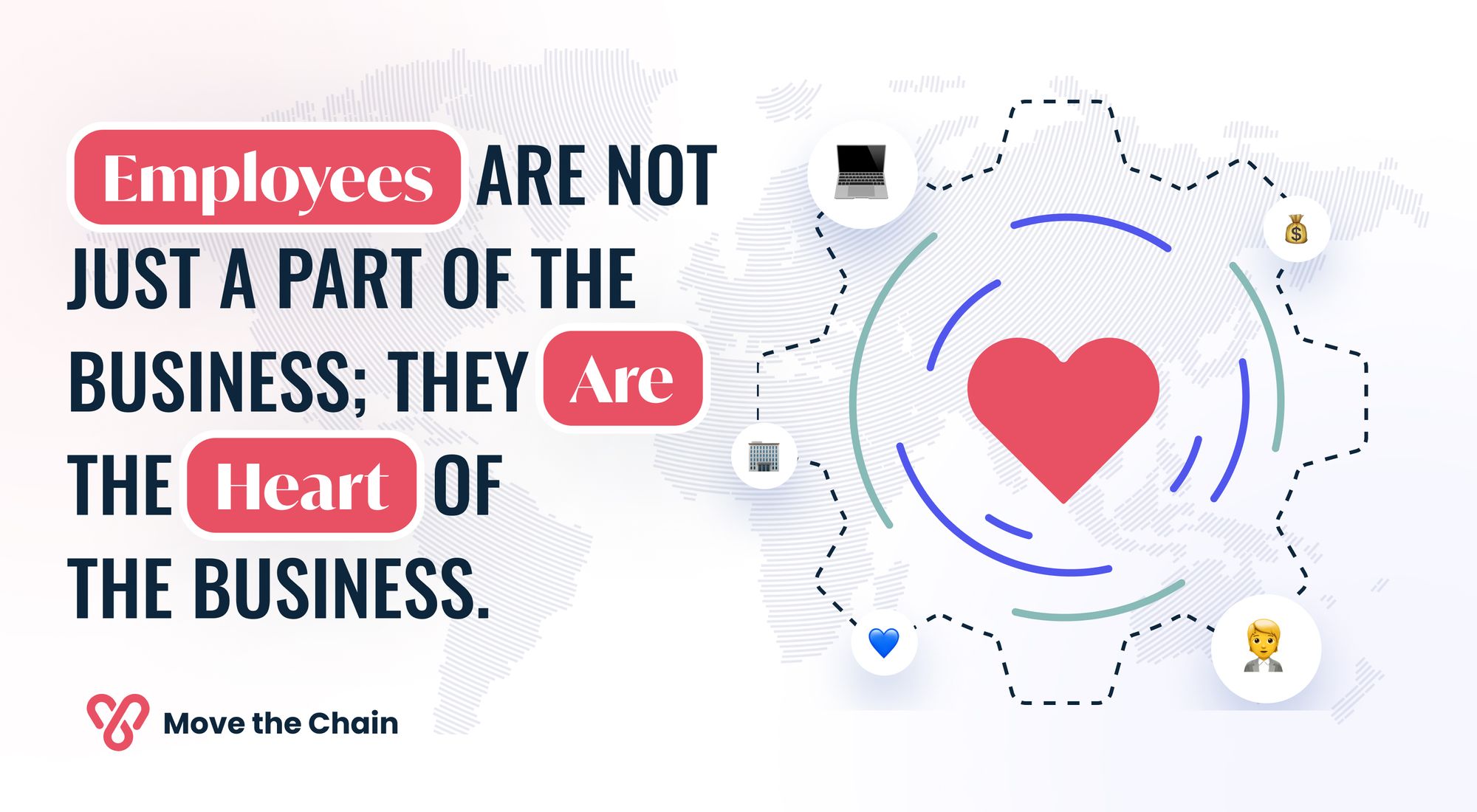Employee Engagement Ideas for CHROs in Corporates

Explore strategies for CHROs to boost employee
engagement in 2023, focusing on trust, communication, flexibility,
wellbeing, and leadership development.
In the ever-evolving landscape of the corporate world, one constant remains - the undeniable power of employee engagement. As we navigate the complexities of 2023, the pulse of engagement within the workforce has become a critical barometer of business health.
However, recent reports suggest that this pulse is weakening, with Gallup noting the lowest ratio of engaged to actively disengaged employees in the US since 2013. This decline is particularly pronounced among young workers, women, and those ready for remote work but stationed on-site.
For Chief Human Resources Officers (CHROs), this presents a unique challenge and an opportunity. Employee engagement is no longer a nice-to-have; it's a business imperative. It's the engine that drives productivity, fuels retention, and enhances customer satisfaction.
In 2023, the role of the CHRO is not just about managing resources; it's about kindling the spark of engagement that turns an employee into a passionate advocate for the business.
As we delve into this comprehensive guide, we will explore the strategies and initiatives that CHROs can employ to revitalize employee engagement. From rebuilding trust to investing in impact, from supporting flexibility to prioritizing wellbeing, we will uncover the keys to unlocking a highly engaged workforce in 2023. Because in the end, a company's success is not just about the bottom line; it's about the people who help you get there.
Understanding the Employee Engagement Landscape
In the corporate arena, understanding the landscape is half the battle won. The same holds true for employee engagement. To address the issue, we must first comprehend its magnitude and the factors influencing it.
Recent statistics paint a sobering picture. Gallup's research reveals a worrying trend - the ratio of engaged to actively disengaged employees in the US is at its lowest since 2013.
This decline isn't uniform across the board; it's particularly pronounced among certain demographics. Young workers, women, and remote-ready on-site workers are bearing the brunt of this downturn in engagement.
Why does this matter? Because these are the very groups that form the backbone of our future workforce. Young workers bring fresh ideas and innovation. Women contribute diversity of thought and leadership. Remote-ready on-site workers represent the hybrid future of work. A decline in engagement among these groups is not just a HR issue; it's a business challenge.
As we move into 2023, CHROs are acutely aware of this challenge. Their priorities reflect the need to address the engagement crisis head-on. Leadership development tops the list, recognizing that engaged leaders create engaged teams. Succession planning follows closely, ensuring a pipeline of engaged leaders ready to step up when needed. Retention strategies round off the top three, acknowledging that keeping engaged talent is just as important as attracting it.
However, these priorities come with their own set of challenges. Budgets are tight, and CHROs must be creative and strategic with their spending. But as we'll explore in the following sections, there are innovative and cost-effective ways to boost engagement, rebuild trust, and create a workforce that's not just present, but truly engaged.
Building Trust and Communication
In the intricate dance of employee engagement, trust is the rhythm that keeps everything in sync. It's the invisible thread that connects leaders to their teams, fostering a sense of belonging, promoting open communication, and ultimately driving engagement. When trust is strong, employees feel valued, heard, and motivated to give their best. But when trust erodes, so does engagement.
In 2023, CHROs face the daunting task of rebuilding trust in a corporate landscape that has been reshaped by economic uncertainty and the shift to remote work. The key to this challenge lies in two fundamental strategies: transparency in communication and regular meaningful conversations.
Transparency in communication is about more than just sharing information; it's about being open, honest, and clear about the company's strategy and cultural values. It's about explaining the 'why' behind decisions, providing context, and acknowledging uncertainties. When leaders communicate transparently, they show employees that they are trusted partners in the business journey, not just spectators.
Regular meaningful conversations, on the other hand, are the lifeblood of engagement. They provide a platform for employees to share their ideas, voice their concerns, and feel heard. Managers play a crucial role here. They need to be equipped to have these conversations, focusing not just on goals and performance, but also on wellbeing and recognition. In doing so, they can prevent employees from feeling disconnected and keep the pulse of engagement strong.
Building trust and fostering open communication may seem like a daunting task, but it's a vital one. As we navigate the challenges of 2023, trust will be the foundation upon which successful employee engagement strategies are built.
Investing in Engagement and Impact
In the world of business, investment is often associated with financial capital. However, as we step into 2023, CHROs are recognizing the importance of another kind of investment - an investment in engagement and impact.
Engagement initiatives are not just HR programs; they are strategic investments that drive productivity, retention, and customer satisfaction. They are the fuel that keeps the engine of business running smoothly.
Despite economic uncertainties, the importance of continued investment in these initiatives cannot be overstated. Whether it's training programs that enhance skills, recognition initiatives that boost morale, or surveys that gauge employee sentiment, each investment contributes to a more engaged and productive workforce.
In this endeavor, real-time feedback tools play a pivotal role. They provide a pulse check on the employee experience, offering insights into what's working and what's not. They allow CHROs to be proactive, to address issues before they become problems, and to celebrate successes that might otherwise go unnoticed. In essence, they turn feedback into a dialogue, fostering a culture of continuous improvement and engagement.
But engagement is just one piece of the puzzle. In 2023, CHROs are shifting their focus from micromanaging performance to inspiring employee impact. They are recognizing that employees are not just cogs in a machine, but individuals who want to make a difference. By connecting employees' work to the larger business success, they are not just driving performance; they are inspiring passion, commitment, and a sense of purpose.
Investing in engagement and impact is not just a strategy for 2023; it's a blueprint for the future of work. It's about creating an environment where employees feel valued, heard, and inspired to give their best. Because at the end of the day, an engaged employee is not just an asset; they are the heart of a successful business.
Adapting to the New World of Work
As we navigate the uncharted waters of 2023, one thing is clear: the world of work as we know it has changed. The traditional office has given way to living rooms and home offices, and the 9-to-5 grind has been replaced by flexible schedules. This new world of work is not just a temporary shift; it's a transformation that's here to stay.
In this transformed landscape, hybrid and remote work options have emerged as powerful tools for attracting and retaining talent. They offer employees the flexibility to balance their work and personal lives, reduce commute stress, and work in an environment where they feel most productive. For businesses, they open up a global talent pool, reduce overhead costs, and increase diversity.
However, while the benefits of remote work are plentiful, the importance of in-person days for collaboration cannot be overstated. There's a certain magic that happens when people come together in the same physical space - ideas spark, relationships deepen, and a sense of camaraderie is built. In-person days provide an opportunity for this magic to happen, fostering a sense of community and belonging that's crucial for engagement.
But how do we balance the flexibility of remote work with the need for in-person collaboration? The answer lies in providing resources to support hybrid teams. This could include tools for virtual collaboration, training for managers to lead hybrid teams, and policies to ensure remote employees have equal engagement opportunities.
Adapting to the new world of work is not just about implementing new policies or investing in new tools; it's about creating a culture that embraces flexibility and inclusivity. It's about recognizing that each employee's work experience is unique and ensuring that everyone, regardless of where they work, feels valued, heard, and engaged.

Prioritizing Employee Wellbeing and Inclusion
In the hustle and bustle of the corporate world, it's easy to lose sight of what truly drives a business - its people. As we navigate the challenges of 2023, prioritizing employee wellbeing and inclusion is not just a trend; it's a business imperative.
Employee wellbeing goes beyond just physical health. It encompasses mental health support, financial stipends, and work-life balance policies. It's about recognizing that employees are not just workers, but whole individuals with lives outside the office. As we approach the holiday season, a time of the year often associated with stress, CHROs have a unique opportunity to showcase their commitment to wellbeing. Whether it's hosting a mental health workshop, offering a wellness stipend, or implementing flexible work policies, each initiative sends a powerful message of appreciation to employees.
But wellbeing is just one side of the coin. Inclusion is the other. In the modern workplace, Diversity, Equity, and Inclusion (DEI) are not just buzzwords; they are the pillars of a thriving culture. An inclusive culture is one where every employee, regardless of their background, feels valued and heard. It's a culture where differences are celebrated, not just tolerated. DEI initiatives, like hosting a cultural appreciation day or conducting a diversity survey, can help build this culture.
Inclusion also extends to the everyday experiences of employees. It's about ensuring that every employee, whether they're at their desk or working remotely, feels part of the team. It's about breaking down the divide between co-workers and fostering a sense of community. Employee recognition programs can play a crucial role here. They are a great way to give employees a pat on the back, to show them that their efforts are noticed and appreciated.
Prioritizing employee wellbeing and inclusion is not just about HR policies; it's about creating an environment where every employee feels valued, heard, and engaged. It's about recognizing that every employee is a vital piece of the puzzle, and their wellbeing and inclusion are key to the productivity and success of the business.
Leadership Development
As we chart the course for 2023, one thing is clear: the role of leaders in shaping the future of work is more critical than ever. Leaders are the architects of culture, the builders of teams, and the catalysts of engagement. They are the ones who can turn the holiday spirit into a year-round boost for employee engagement. But to do this, they need to be equipped with the right skills, knowledge, and mindset. This is where leadership development comes into play.
Investing in current and future leaders is not just a best practice; it's a strategic imperative. It's about recognizing that the leaders of today will shape the workforce of tomorrow. It's about acknowledging that leaders are not born; they are made. And it's about understanding that the best Christmas gift you can give your employees is a leader who inspires, motivates, and engages.
Development programs play a crucial role in this endeavor. They are the training grounds where leaders learn to lead, not just manage. They are the platforms where leaders learn to communicate effectively, to make people feel valued, and to create a culture of engagement. Whether it's a workshop on effective internal communications, a team-building activity, or a brainstorming session on boosting engagement, each program is an opportunity to hone leadership skills.
But leadership development doesn't stop at training programs. Succession planning is a key piece of the puzzle. It's about identifying potential leaders within your team members and nurturing their growth. It's about creating a pipeline of talent ready to step up when the time comes. And it's about ensuring that the holiday cheer, the team spirit, and the culture of engagement continue to thrive, no matter who is at the helm.
As we approach the end of the year, it's time for CHROs to reflect on their leadership development strategies. Are they investing in their leaders? Are they providing the training, support, and opportunities leaders need to succeed? And most importantly, are they creating leaders who can drive employee engagement and retention?
In 2023, leadership development will not just be a HR initiative; it will be a business priority. Because at the end of the day, a company's success is not just about its products or services; it's about the leaders who inspire its people to give their best.

Conclusion
As we wrap up this comprehensive guide, let's take a moment to reflect on the journey we've embarked on. We've navigated the landscape of employee engagement, understanding the trends and the demographics most affected by its decline. We've delved into the priorities of CHROs in 2023, highlighting the importance of leadership development, succession planning, and retention strategies.
We've explored the critical role of trust and communication in fostering engagement, emphasizing the need for transparency and regular meaningful conversations. We've recognized the importance of investing in engagement initiatives and the power of real-time feedback tools. We've celebrated the shift from micromanaging performance to inspiring employee impact.
We've adapted to the new world of work, acknowledging the role of hybrid and remote work options, the importance of in-person collaboration, and the need for resources to support hybrid teams. We've prioritized employee wellbeing and inclusion, recognizing the importance of benefits like mental health support, stipends, and work-life balance policies. We've underscored the role of DEI in building an inclusive culture.
And finally, we've championed the importance of leadership development, acknowledging the role of development programs and succession planning in driving engagement and retention.
As we step into 2023, one thing is clear: the focus on the employee experience is more important than ever. It's not just about policies or programs; it's about creating an environment where every employee feels valued, heard, and engaged. It's about recognizing that employees are not just a part of the business; they are the heart of the business.
In the end, boosting engagement and retention is not just a CHRO's responsibility; it's a business imperative. Because when employees are engaged, they are not just working for the company; they are working with the company, driving its success, and shaping its future. And that's a business outcome worth investing in.